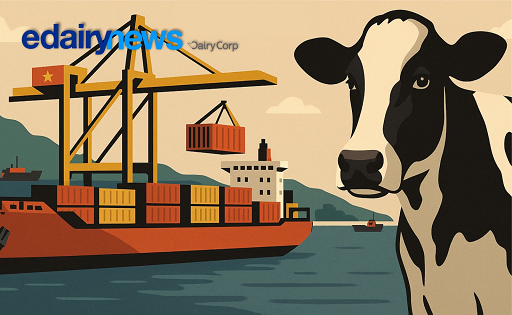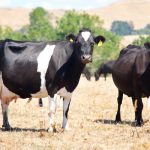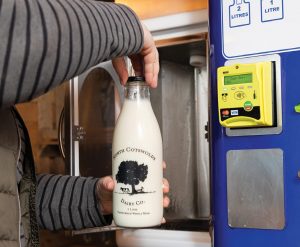
The construction of COFCO’s megaport in Brazil marks a turning point in international grain trade, with ripple effects now reaching the global dairy industry. With an investment of over USD 285 million in the Port of Santos, COFCO is pursuing far more than logistical efficiency: it aims to solidify China’s direct control over key food supply chains.
The new terminal, capable of handling up to 14.5 million metric tons of grain and sugar per year, will include storage for 490,000 tons and feature loaders capable of dispatching two Panamax vessels per day. An additional USD 206 million is being spent on freight wagons and locomotives, aiming to cut logistics costs by 10–15%.
This strategy strengthens China’s direct access to essential inputs for its food and protein production, eliminating intermediaries and ensuring more competitive pricing. But the impact extends well beyond China’s borders: the global pressure this kind of efficiency places on production costs is already affecting other industries—including dairy.
Meanwhile, the United States is attempting to counter China’s growing influence through short-term measures, such as a temporary reduction in tariffs on dairy exports to China—from 145% to 30% for 90 days. In turn, China has also announced a temporary reduction in its import tariffs on foreign dairy products, from 125% to 10%. However, these measures are temporary and do not address the structural shifts underway. With Brazil offering unrestricted access to China, the playing field remains uneven.
Against this backdrop, Mexico continues to emerge as a strategic ally for U.S. dairy. In 2023, it absorbed 29% of U.S. dairy exports, valued at USD 2.32 billion—compared to just 7.6% for China. Over 80% of Mexico’s dairy imports come from the U.S., supported by a framework of clear trade rules and low commercial risk.
For the dairy sector, COFCO’s logistics expansion represents a structural shift: as China secures cheaper grain from Brazil, global corn and soybean prices could decline in less efficient markets—raising feed costs and squeezing profitability elsewhere. This would directly impact the global competitiveness of dairy producers.
In today’s interconnected market, logistical and geopolitical moves in the grain trade echo far beyond the farm. They’re shaping the future of milk itself.
You can now read the most important #news on #eDairyNews #Whatsapp channels!!!
🇺🇸 eDairy News INGLÊS: https://whatsapp.com/channel/0029VaKsjzGDTkJyIN6hcP1K




















